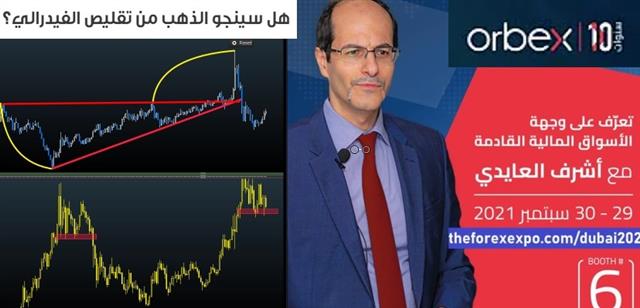Intraday Market Thoughts Archives
Displaying results for week of Sep 26, 2021Turbulent Times, October Seasonals
The temporary 9-week funding bill to prevent a government shutdown passed yesterday, but the threat of US default still looms as no agreement has been reached regarding the suspension of the Federal debt limit. Ashraf shared a crucial FX chart for the Arabic and English WhatsApp Broadcast Groups with 4-cycle accuracy, suggesting a key inflection point ahead. We have a look at October seasonal patterns. The EURUSD short was stopped out, while the GBPJPY short and EURGBP long deepened in the profit.
Wednesday's trade featured another sharp rise in energy price and another painful fall in equities. The dollar strength from earlier in the week reversed to some degree and gold rebounded sharply.
Solid fundamental news was light aside from a rise in initial jobless claims to 362K compared to 333K expected. It's the second week in a row of rising numbers, though it was largely disregarded by the market.
Washington is an increasing focus but there was no real progress on steps towards solving the debt ceiling, passing the bipartisan infrastructure deal or agreeing on how to use reconciliation. Time is ticking though and we may see votes fail before anything comes together. That could represent a TARP-like buying opportunity, particularly on the debt ceiling.
Energy prices in Europe and Asia continued to soar with year-ahead power prices in southern Europe rising to crippling levels. A newswire report said a top Chinese official gave an order to secure supplies 'at any cost' and that headline gave fresh lift to energy, along with commodity currencies.
The bad news for China and anyone else on the wrong side of the trade is that October is a especially strong seasonally for gas. It's risen in 15 of the past 20 years for an average gain of 6.65%. Early weather forecasts are temperate though, so that could help.
Another market at extremes that could also face seasonal pressure is gold. October is the second-worst month for buillon. A further drop here could set up a fantastic buying opportunity ahead of the pattern of seasonal strength from late November through February.
One spot in the energy market that could get some help from seasonals is oil. October and November are the two worst months for crude and on Thursday there was a report that OPEC could look at new ways to add supply at next week's meeting.
Other trends include moderate USD strength, CAD weakness, rising yields and middling stock market performance until the traditional strength in Nov-Dec.
he dollar bid this week has been relentless and it's now getting extra fuel by technical factors and a potential squeeze. Cable broke through the July-Sept triple bottom and has plunged down to the lowest levels of the year, with little support nearby.
The euro is very close to the lows from last November and a break below would be a 15-month low. USD/JPY rose for the sixth day to the best since Feb 2020 in what looks like a major awakening after a long slumber in the pair.
These are all major moves and represent a possible trend change in the dollar. Of course, we're right in the thick of quarter end so signals can be confusing.
The best explanation for the dollar rally is also the simplest: Fed tapering. Though it's been well known for some time and there wasn't an immediate reaction, it certainly fits with the latest price action.
Further down the rabbit hole is the inflation picture. Powell said Wednesday that supply chain bottlenecks are worsening. That is going to put upward pressure on prices and – as we highlighted earlier this week – there's an ongoing shift in central bank messaging to acknowledge this. The next step would be a more-hawkish message. We may be seeing that priced in.
Another possibility is the US political drama around the debt ceiling, infrastructure and reconciliation. We have no doubt that the US will pay its debts but this drama has a way of frightening market participants and we can't rule out turmoil. As we often repeat, political deals are always the most-fraught at the end.
Beyond that is the signal from energy and commodity markets. There's been no let-up in European gas prices with a 10% rise on Wednesday to a new closing record.
Finally, there's still the looming threat of a Chinese slowdown and Evergrande. Bond payments continue to be missed and we await signs that officials will take steps to boost growth – something Blackrock predicted in a note on Tuesday.
هل سينجو الذهب من تقليص الفيدرالي؟
Reality Bites GBP, Team Transitory Feels Heat

Central banks around the world adjusted mandates last year to tolerate inflation overshoots as they tried to fight a decade of disinflationary pressure that led to repeated undershoots on pricing. Like a bad trader, they might have tossed out the old playbook at the worst possible time.
Supply chain bottlenecks, commodity prices rises and the inability to find workers are all pushing prices in the same direction – higher. With energy curbs now hitting China and potentially India, the resulting blackouts could further injure supply chains. In any case, the timeline for a return to a 'normal' economic environment is fading.
Moreover, while many economists are fretting about current bottlenecks, we're wondering what will happen to inventories once supply chains normalize. The natural reaction will be for companies to build higher-than-usual inventories and that should keep production humming through 2023.
This week, BoE's Bailey offered a nod to that thinking. While he offered the usual nod to Team Transitory, the message is beginning to lack confidence. “Our view is that the price pressures will be transient,” he said. On persistently higher prices, he said “I take this risk very seriously.”
In the US, the Fed's Williams repeated much of what Powell said but added that he's not seeing worrying signs of inflation yet but it's something to watch closely.
These are starting to sound like a slow climbdown on inflation, or at least a hedge. This debate won't be settled any time soon but rising yields and commodity prices show which way the wind is blowing.
1.5% Yields
The latest run-up in US bond yields means business. Bond bears (those expecting higher bond yields) will tell you to watch 1.53/4% for the next key resistance, while bond bulls will suggest you wait til the end of week/month/quarter for confirmation above the 1.49% trendline resistance on the weekly chart. First thing we did this morning when we saw a 200-pt rally in DOW futures and 80-pt gain in Nasdaq futures was to issue a short in NASDAQ to members of the WhatsApp Broadcast Group (see below). The more interesting question for today and next month is why metals held up despite the surge in yields? Perhaps as long as bond yields rise and break-even 10 yr yields (inflation) keep up with them, metals could avoid the ugly scenario of 2013-14. There are other factors at play (global inflation, Chinese growth, USD levels and supply chain situation). For now, we're concerned with taking avoiding USD and Fed risk/noise. One of these trades was issued earlier today to the Premium subscribers.









